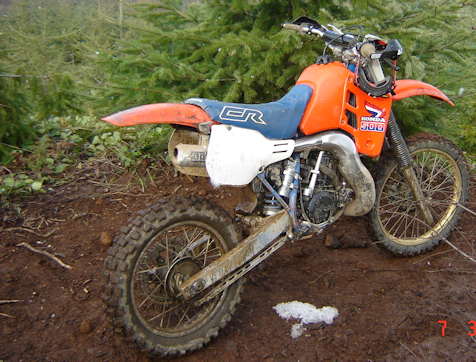Power band is a very controversial word when talking about dirt bikes. It is commonly believed that "power band" was a new concept for some race bikes/dirt bikes and it was a common question "Does this bike have power band?". I remember one time my dad was working on a bike and one of the kids I hung around with asked him what was wrong and he said "I'm putting in a new power band, the old one was worn out". People would talk about "Power Band" as if it was a physical peice of the bike that you could replace.
I remember "Power Band" was explained one time that a normal motor goes up to about 8,000 RPM however a motor with power band (i.e. a race bike) goes up to 12,000 RPM. The "Power Band" kicks in when the motor has reached peak RPM of 8,000 and then it kicks into power band and keeps going beyond the peak RPM to 12,000 RPM. That's a power band!
The truth is that all motors have a "power band" and it is nothing more than the range of RPMs which allow the motor to operate at it's peak performance and most efficiently. This is defined as the range between peak torque and peak power (horse power).
- Definition: The subjectively defined rpm range over which an engine delivers a substantial fraction of its peak power. The power band usually extends from slightly below the engine's torque peak to slightly above its power peak. So what does this really mean? Wikipedia talks about two types of power bands "Peaky" and "Torquey". A "Peaky" engine is one that generates more power from a very short power band and thus seems to have a lot of power for a very short period. This requires that you shift often and thus you would need more gears. A "Torquey" engine is one that has a much longer power band but less peak power and since it has a lot of power over a much wider range of RPM. The wider range of RPM allows you to feel the power of the bike from any RPM within this range.
Wikipedia also describes why there is such a misconception that some bikes do not have a power band and it is due to the length of a power band. A typical short power band is easily felt as jerky or a sudden boost of power while a longer power band does not give this impression since there is a greater distance between the peak torque and peak power.
Torque is defined as the amount of force being applied to rotate the crankshaft essentially while horsepower is the amount of power that is being output from the engine. There is a formula you can use to calculate for any given amount of torque and rotations what the horsepower being output would be. This is where the peak torque is at a certain RPM then as RPMs increase and torque decreases horsepower increases to a maximum peak. That range of RPMs is the power band.

